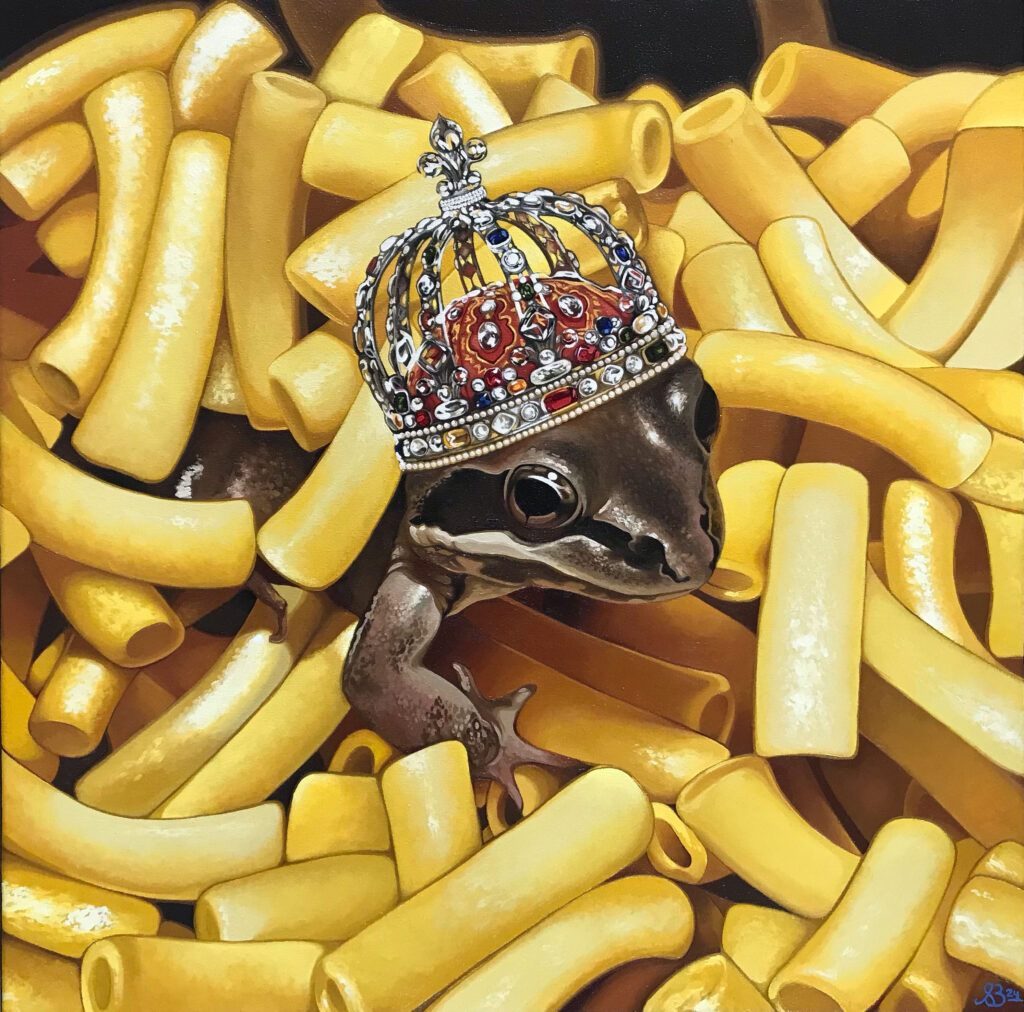Your cart is currently empty!
INTERVIEW | Sarah Fairy
My name is Sarah Fairy, and I was born in Austin, Texas (United States of America). I moved to the Netherlands in 2018 for a better life, and to live in an environment that would allow me to explore and achieve my dreams of being a full-time artist. I grew up with my head in the clouds and an intense need for imagination and creativity. While this was fostered as a hobby, I was encouraged to go to school for something that would provide stability and safety. In university, I majored in biology and biochemistry, and up until recently was working in a laboratory that developed one of the COVID vaccines (J&J). However, an artist can’t hide from their destiny forever- the art inside of them demands to be created, and the only way to fully realize yourself is to let that destiny take you by the hand. I live with my supportive and amazing partner, who encourages me every day to achieve my dreams, and I am constantly exploring my style and looking for ways to express this in my paintings.
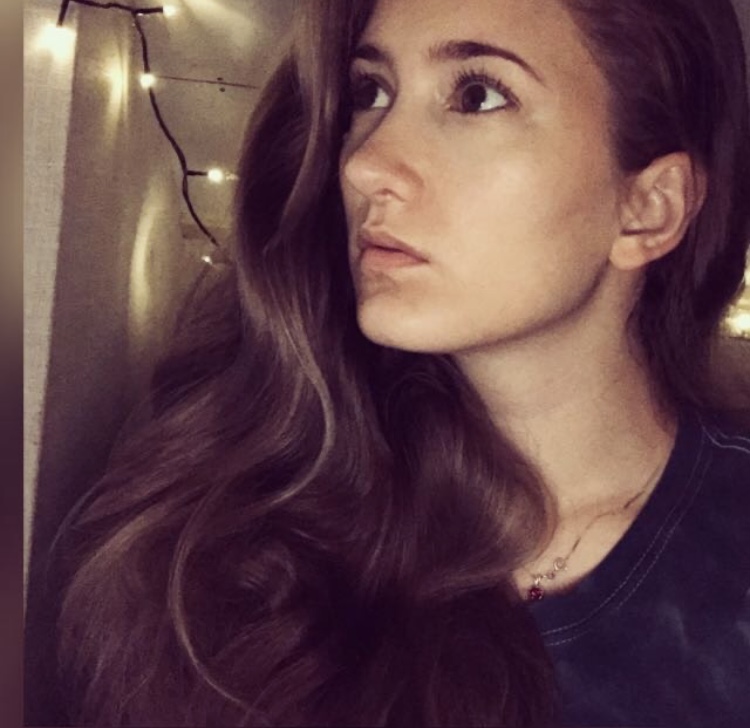
Instagram: @sarah.fairy.art | Website: www.sarahfairy.com
____________________________________________________________________________________________________________
As an artist, my primary goal is to create pieces that take the viewer to a place they thought could only exist in dreams. When you feel alone but internally your heart and mind are buzzing, when there’s a richness inside but you feel like nobody can see it except for you- I want to show the viewer they are intrinsically connected to others who have similar thoughts and that we all share this world of color and whimsy.
I would define my work as magical realism, which is achieved though saturated color and unusual subject matter combinations. There is an intensity that shines through the softness, a comfort that can leave you feeling wistful for a distant memory or laughing at an unusual or silly image that comes with no ready explanation. I work in oil paints, which allows me to create the high level of detail that I strive for.
____________________________________________________________________________________________________________
1.Can you tell us more about your journey from a career in science to pursuing art full-time? What was the turning point that made you decide to take this leap?
I had grown up always wanting to be an artist, but was convinced that I needed to go to school for something more stable, the kind of career that would always be in demand. While this seemed like the right choice for many years, I worked in various laboratories and felt like something very important was missing. You work, you go home and you want to create, but there’s only so many hours in the day and only so much energy you can exert. The real turning point was when I came home from work one day and had absolutely no energy anymore. The reserves I had tried to build up over time had been totally depleted. I had burned out and didn’t realize that it was even possible to do so; where I come from, work IS life. So the idea that I could turn the page, maybe slow down and look inside of myself to answer some really tough questions about what I was doing with my life and what I wanted out of it- it was very intimidating, but this was the time to do it. I just felt ready to be truthful with myself about what was missing in my life and why something always felt wrong: I wasn’t making my art my focus.
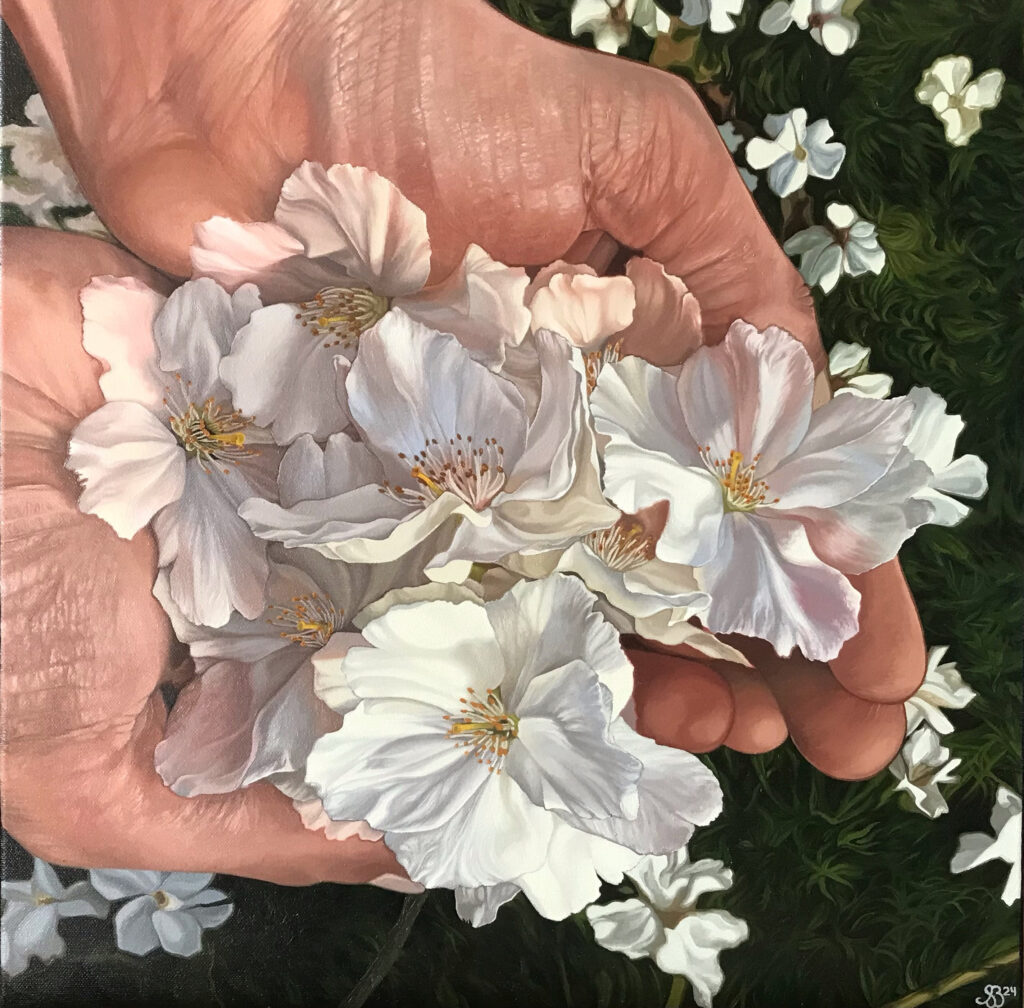
2.How has your background in biology and biochemistry influenced your approach to art, if at all? Do any scientific themes or inspirations make their way into your work?
I’ve always loved nature- animals, plants, weather, basically everything. These were my favorite things to study in school (besides art), and I’ve always been obsessed with the intricacies of life and how many little details and dramas you can see play out with the wildlife and environment around you if you just pay attention for a moment. I can definitely say that my work is always very nature-focused for this reason. I love the smooth lines, the intricate forms and the way color plays off of natural forms depending on the time of day, location, season, everything. And because I worked in laboratories for so long, being extremely tuned in to details and precision is something that has been drilled into my approach to most things in life, but I already had that approach to art anyway.
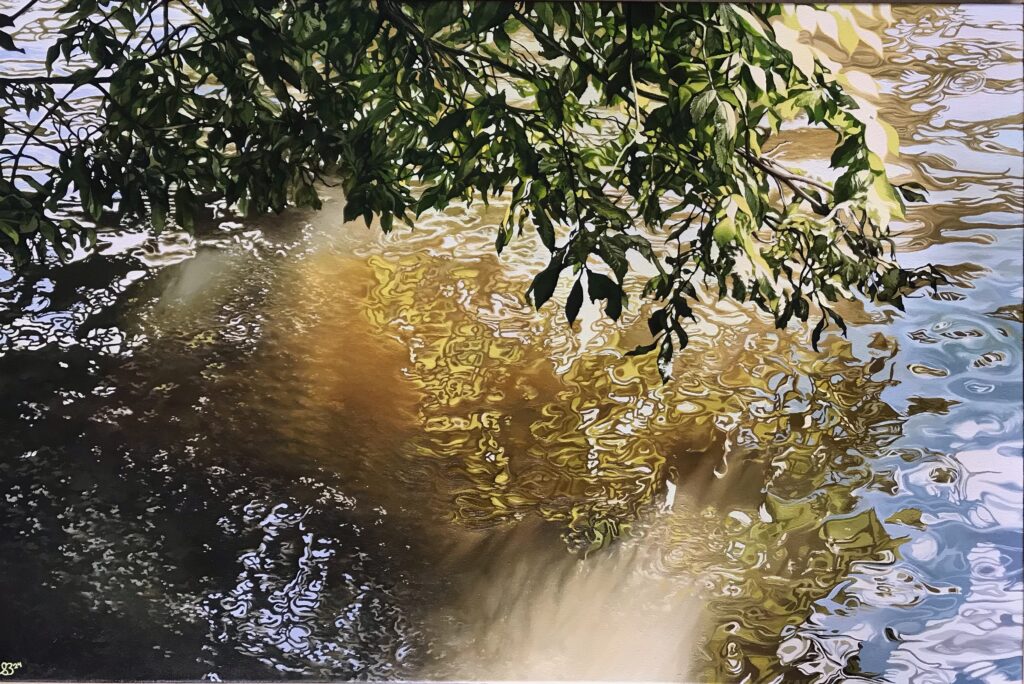
3.You describe your style as “magical realism.” How did you develop this style, and what does it mean to you personally?
Magical realism, to me, is the representation of an entirely plausible world where you can find the whimsy in ordinary things, while also appreciating them for what they truly are. There’s always something a little off, a little unusual with my paintings- what you see might exist or it might not exist, but it’s up to you to decide that for yourself. No two people will ever see or think the same thing when they are both gazing at the same object, so I try as hard as possible to show the viewer what I’m observing and feeling when I see a tree, a flower, an animal. I developed this style as I realized that I just really, really liked staring off into space- no joke, I always get excited taking in sights that are entirely ordinary to most people, and I want to make them feel the same excitement as I feel when they see how the light plays off of a leaf, for instance.
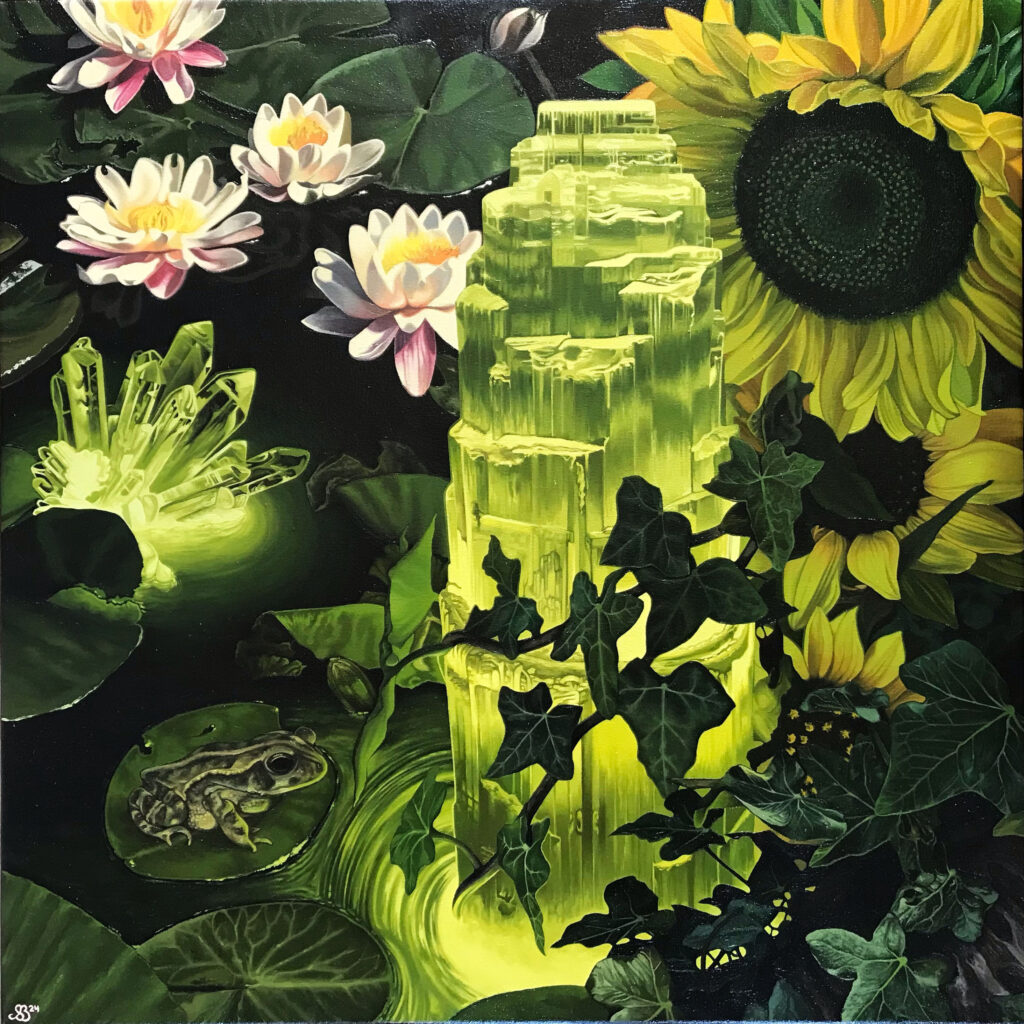
4.Your artwork combines saturated colors and unusual subject matter to create a sense of “intensity that shines through the softness.” Can you describe your process for choosing color palettes and subjects?
For subjects, I mostly make pieces based off of ideas I’ve already got rolling around in my mind combined with beautiful things I’m seeing and finding in real life. Any time I’m out, I’m looking for new material and I’ve got my phone ready to take reference photos. Sometimes you might find a creepy-looking mushroom, or a soft flower covered in dew, or the sun is hitting the water just right. You think to yourself, “I am never going to see this exact same thing again and nobody else will either. It only exists in this moment, and that’s a gift to whoever finds it.” So it’s my way of taking something from nature, “borrowing” it from the world and giving it back through the paintings. The color palettes will naturally follow from that, depending on what the subject(s) in the painting are, but I tend to like using contrasting colors. Incorporating a palette with mostly opposites (red/green, orange/blue, yellow/purple) along with darker, earthy tones tends to create pieces that “pop” out in a very satisfying way. And if I’m using reference photos, or putting them together for a visual reference, I saturate the image just enough to give me colors that are slightly more intense than nature provided, but plausible enough that you still believe you’re looking at something completely natural.

5.What role does your partner play in your creative process, and how does their support shape your work as an artist?
My partner has always believed in my dreams. I love showing him the progress of my paintings (which, to be honest, would be difficult to avoid- I paint in the living room because it has the best light!), and he’s always excited to see what I’m coming up with next. There have been many times when I have been intimidated by the idea of following this dream, doubting that it could be possible, but he has never, ever doubted it. The thought never even crossed his mind that I couldn’t do this, and because of that, it has slowly helped me to see what he sees and believe in myself.
I think that for a lot of people, especially in an individualistic society, they are taught that you have to find all of these resources within yourself and by yourself. But the truth is, you can’t know what you haven’t been taught- and sometimes, the concept of actually following a path in life that makes you happy feels selfish somehow. It isn’t wrong to start walking in a different direction, towards a goal that makes you feel fulfilled and actualized. In a weird way, this has made me a better artist because I don’t feel like I have to “hold back” anymore. I can experiment or make a mistake and learn from it because there’s all the time in the world now. I don’t have to worry about wasting energy or not putting enough effort into my art, because this is my life now. I’m not sure if I would have figured this all out if it wasn’t for my amazing partner.
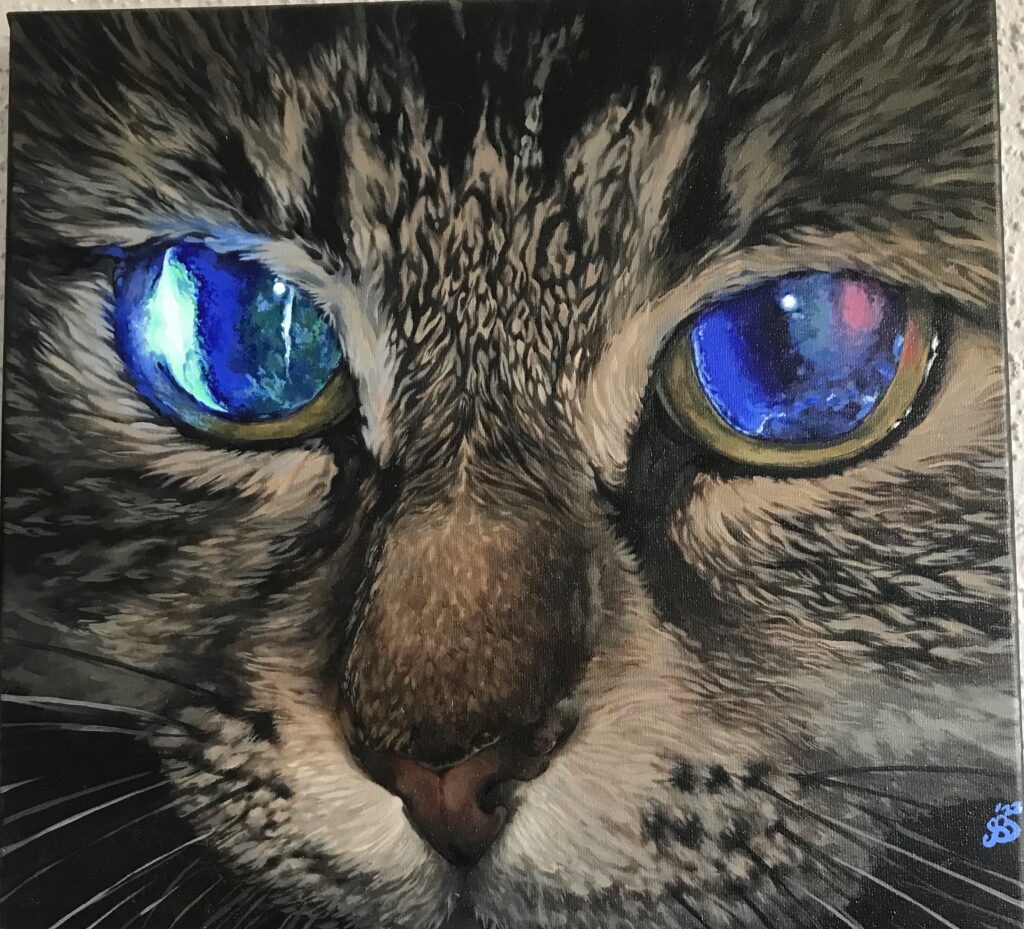
6.You aim to transport viewers to a place they “thought could only exist in dreams.” Can you share a specific piece or moment when you felt you achieved this goal?
Right now I’m working on a four-piece series, with each painting representing one of the seasons. Each piece incorporates colors, flowers, plants, animals, etc. that you would associate with that season, but then there’s giant glowing crystals nestled into the scene. Something that can’t exist and has no function in nature- big, glistening, colorful crystals just sticking out of the water or a decaying tree stump, or even (if I can get my hands on one) a human skull. It makes no sense, and the whole purpose is just to be gorgeous. There have been a handful of times when I got to experience seeing things like this in dreams and I desperately wish it was real. For instance, I dreamt of a beach that was absolutely covered in glowing crystals, like embedded into the sand, and you could see faint spots of light in the sea where the light from these gems pierced through. I want to share impossible sights like these with other people, because it’s just too pretty to keep to myself!
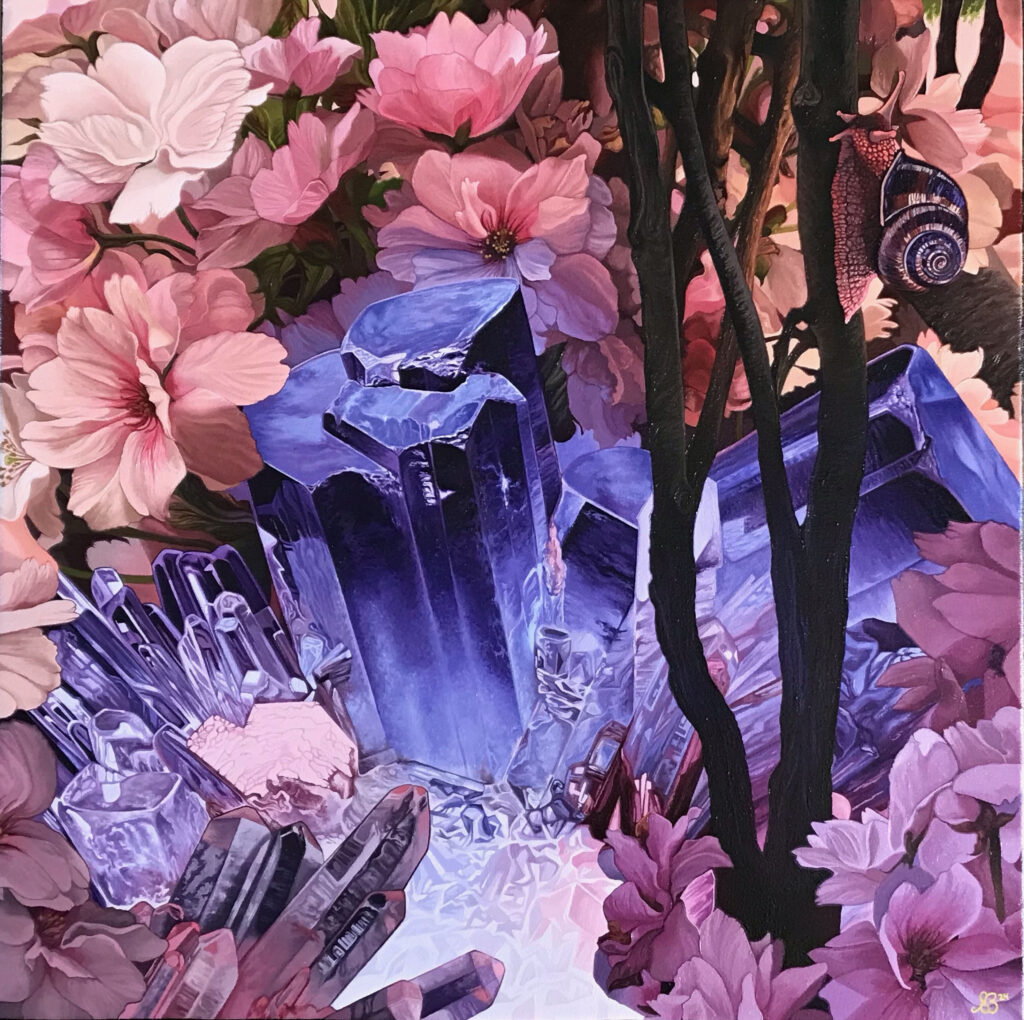
7.Can you walk us through your typical creative process with oil paints? How do you approach achieving the high level of detail you strive for?
Since I mostly work from references, I create a “grid” over the image I’m working from and then proportionately apply that grid to the canvas. This allows me to keep measurements accurate so that the underpainting doesn’t end up being proportionately wonky. Next, I paint the whole canvas over with a thin layer of burnt sienna. I’ve noticed that there’s a nice mellow warmth that glows through the final piece when this is done, no matter how many layers you paint over it. Next, I make a sketch with burnt sienna and make sure the darkest parts of the painting are blocked in. After this has dried, I go for the background first, or the parts of the painting that might not be as “exciting” for me- kind of like eating your dinner before your vegetables! It keeps me energetic and looking forward to painting the fun parts later, like the centerpiece or the most colorful object. After that first “official” layer, I go over everything again with more detail, and then take some time to look over the whole piece and make sure I’m not leaving anything out. Because I’m a stickler for detail, it took a while to understand that you can certainly “overwork” a painting and make it a little TOO detailed, so I make sure I gloss it over after everything is completely dried so that there’s no going back.

8.You moved from the U.S. to the Netherlands to pursue a more fulfilling life and career in art. How has the change in environment impacted your art and creativity?
The change was something I didn’t quite understand at first, but I certainly felt it. To begin with, there seems to be a deeper level of respect for creativity and the arts in general in the Netherlands, at least from my own personal perspective and what I’ve experienced back home. Art was definitely seen as “just a hobby” or something that was reserved for people who were already wealthy or part of a family with established connections. While this is definitely known to be the case with other careers, I have never heard of anybody turning their nose up at somebody who decided to become a doctor or a lawyer because it was their passion in life! But in the Netherlands, I don’t see that kind of attitude towards the arts or the idea of somebody choosing a creative career. People certainly seem a lot calmer and open to new ideas and perspectives, which certainly helped “heal” certain preconceived notions and wounds I had been carrying around in regards to following my dream. When you’re surrounded by people who believe in you, or you live in an environment where people respect your choices, it’s easier to open up and really come into your own. I have become a much better artist since moving here because I don’t feel like I have to hold back or “hide” parts of myself in order to be appreciated for who I am and what I want to do.
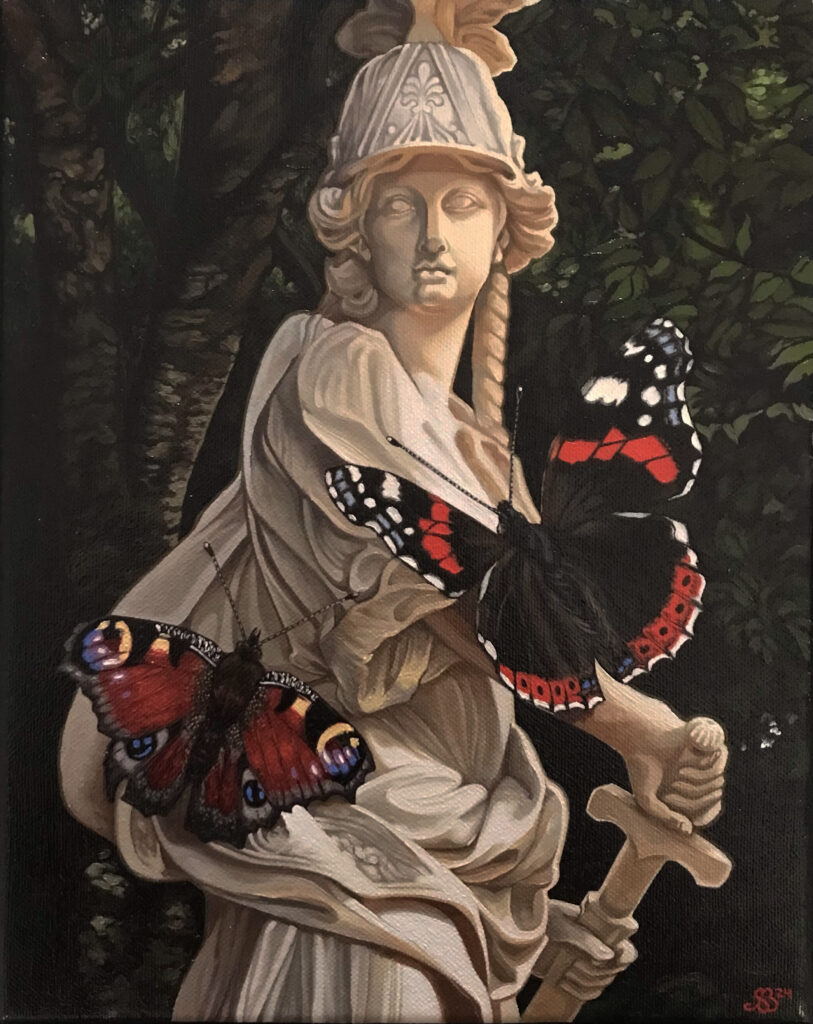
9.What emotions or thoughts do you hope to evoke in your viewers when they look at your work? Do you have a specific audience in mind when creating?
First and foremost, I want them to feel like they’re looking at something that soothes their eyes. I’m not sure how to explain it, but there are certain pieces that just make you stand still and sigh a little at how lovely looking at it makes you feel. It might be the harmony of the piece, the colors or subject matter, but you know it’s something you just want to keep looking at and searching through. So there’s that enveloping general feeling I want to evoke in the viewer, but I also want them to feel a bit energized or invigorated by the beauty I’m trying to create. Most (if not all) of the pieces I’ve created so far have been very positive images that are meant to make the viewer happy or curious, but I’m still trying to figure out who exactly my audience is and who it can be. It feels like fine art that is a little less “serious”, with the whimsy and saturated colors, but still serious and realistic enough to respectfully portray any subject matter I can think of. Accessible yet elegant. So perhaps the audience I am trying to appeal to would be considered more general, with people who appreciate realism and detail but who are a little quirky and attracted to art that reflects an imaginative inner world.
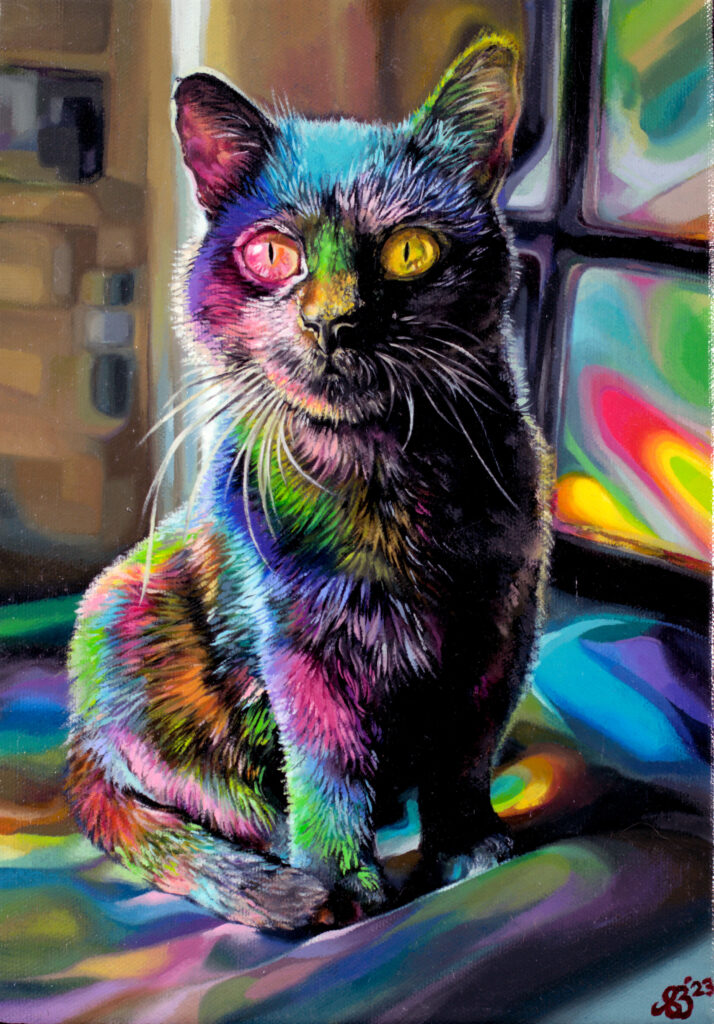
10.Magical realism often blends the ordinary with the extraordinary. How do you decide on the “unusual or silly” images that make it into your paintings, and what story are you trying to tell through these choices?
It usually starts with me just wanting to paint a specific subject and then seeing how I can create a piece that showcases those subjects in a way that reflects how I think about them. For instance, I have a painting called “Drowning in Luxury” that depicts a frog with a crown on his head sitting in macaroni and cheese. I saw this photo and thought, “This is really cute, and I want to work with yellow and orange right now, but I also want to work with a lovely crown reference I’ve been holding on to for quite some time now”. So I put together a piece that would incorporate all of the ideas that were tickling me at the moment, and decided that I would allow the viewer to interpret it in their own way. It’s a frog, he’s got a crown and he’s hanging out in some pasta. I know what it means to me- it’s hilarious and cute and was an opportunity to mix beauty and silliness. But what does it mean to you?
